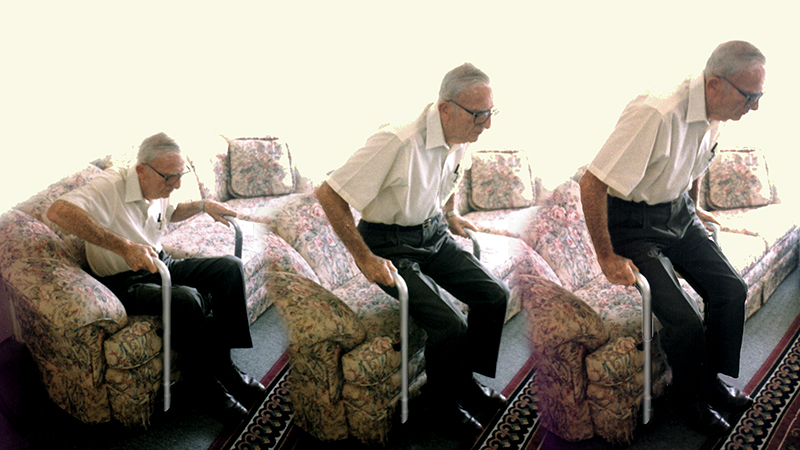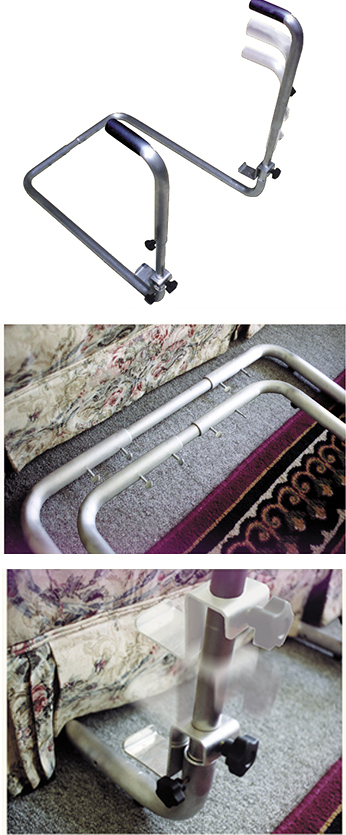
A New Lift for Those Who Need It
An engineer, who worked to design a launch pad safety exit for NASA, put his knowledge to use when he developed the eZ-uP™ lift device. Paul Neal worked with NASA's Kennedy Space Center in the late 1960s to help develop a safety exit to allow workers to get off launch platforms in an emergency--a design that was patented by NASA. Now retired, Neal watched as his wife struggled to get out of a chair or lift herself from a sofa because of her arthritis. So, he decided to devise an aid for people to lift themselves from seated positions.
Amazingly, the 79-year-old retiree with a degenerative eye disease that has left him legally blind was able to design the device by himself. His original design was elegantly simplet—the apparatus was placed under a seat cushion so that two hand supports were then in front of the seat just below shoulder level. This way, a seated person could take hold and easily lift herself from the seat. It wouldn't work, however, on any chair or sofa that didn't have removable cushions. So, Neal took his model and drawings to RJDesigns & Associates of Panama City, Florida.
Immediately, RJDesigns recognized the benefit the elderly and disabled would receive from such a device. With refinements, Neal and the firm went through seven prototypes as they tested the device at retirement homes, the Council on Aging, and on all designs of beds, sofas, and chairs at a furniture store. According to RJDesigns, the eZ-uP device can support people in excess of 500 pounds. It can be quickly and easily assembled without tools.
The eZ-uP is constructed of lightweight aluminum and features telescopic arms for maximum support. Broken into its individual pieces, the eZ-uP fits inside a seat cushion-sized box. The telescopic arms have easy-to-turn clamps that make it completely adjustable in height and width, and the device slides under most sofas, chairs, and beds. It will not slip on tile or wood flooring and can be secured to just about any furniture design.
RJDesigns is also marketing an attachable table tray that adjusts to all positions while supporting level objects. According to RJDesigns, the lift aid is an inexpensive alternative to other products in the same general market. Chairs that lift a seated person using a pneumatic device can cost almost ten times the amount of the eZ-uP.
Neal's royalties from sales are just a secondary benefit of his invention. "[The money] doesn't worry me a bit," Neal says, "If I can help somebody that's great. The important thing is it worked so good for [my wife]." The eZ-uP is a true accomplishment for a husband who wanted to give a helping hand. The fact that others could benefit is such a great plus for his efforts.
eZ-uP™ is a trademark of RJDesigns & Associates.

The eZ-uP™ is constructed of lightweight aluminum and features telescopic arms for maximum support. Broken into its individual pieces, the eZ-uP fits inside a seat cushion-sized box.

The eZ-uP™ device will not slip on tile or wood flooring and can be secured to just about any furniture design.













